Hello! Last month we shared some dishonorable and humorous drinking habits from the Edo period (1603-1867). The sake brewed in Kamigata (Kyoto and the surrounding vicinity where the Emperors resided, including Nishinomiya) during this historical period was very popular in Edo (present-day Tokyo) and many people would have drank and enjoyed it liberally. In this post, we’d like to share about the sake transactions that occurred across the long distance between Edo and Kamigata.
In today’s globalized world, it is easy to communicate and make global transactions using computers and cell phones. In the Edo period, however, the communication method was limited to the exchange of letters. Through the museum’s historical documents, let’s discover how the sake brewers in kamigata and the sake wholesalers in Edo communicated and conducted their transactions of sake.
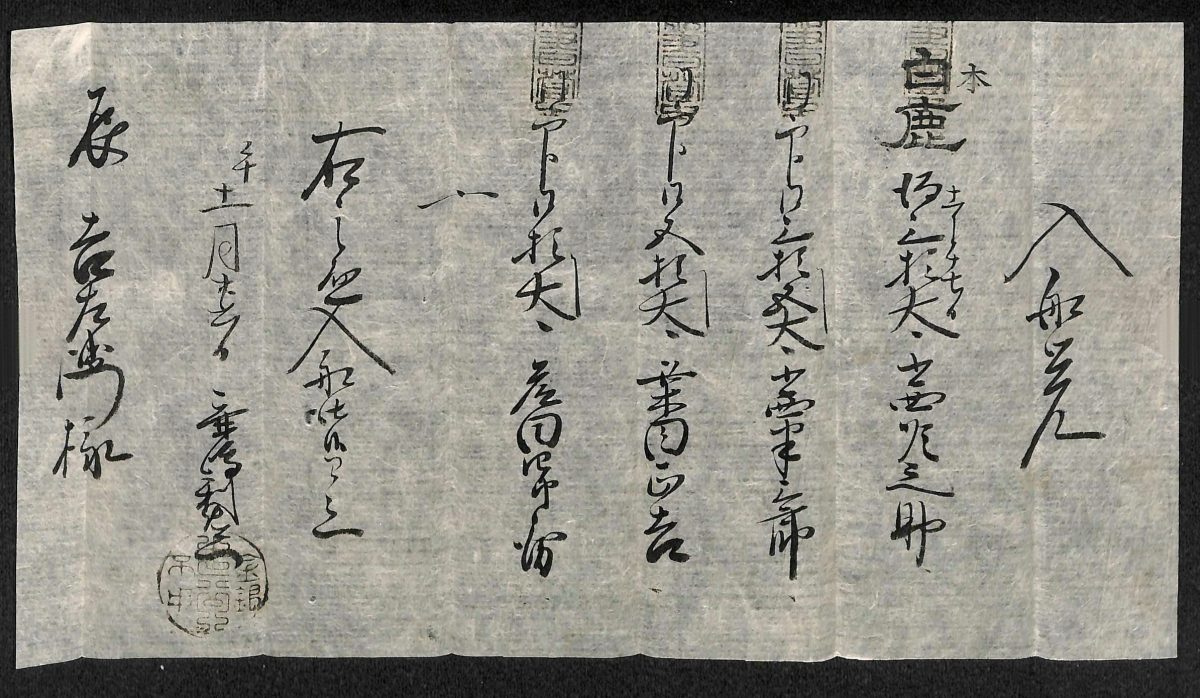
When a tarukaisen vessel (a vessel specially designed to transport sake casks) laden with sake casks arrived at Shinkawa, Edo, from Osaka and/or Nishinomiya, the first thing a wholesaler in Shinkawa did was issue a vessel arrival notice (nyūsen-oboe) to each sake brewer. This notice contained information about the vessel, including the arrival date, sake brand name and quantity of cargo. The below photograph of the notice contains information about four vessels. The first line on the right indicates that 60 casks of Hakushika Sake arrived at Shinkawa, Edo on November 17 on a vessel owned by the Konishi Family and operated by a man named Junnosuke.
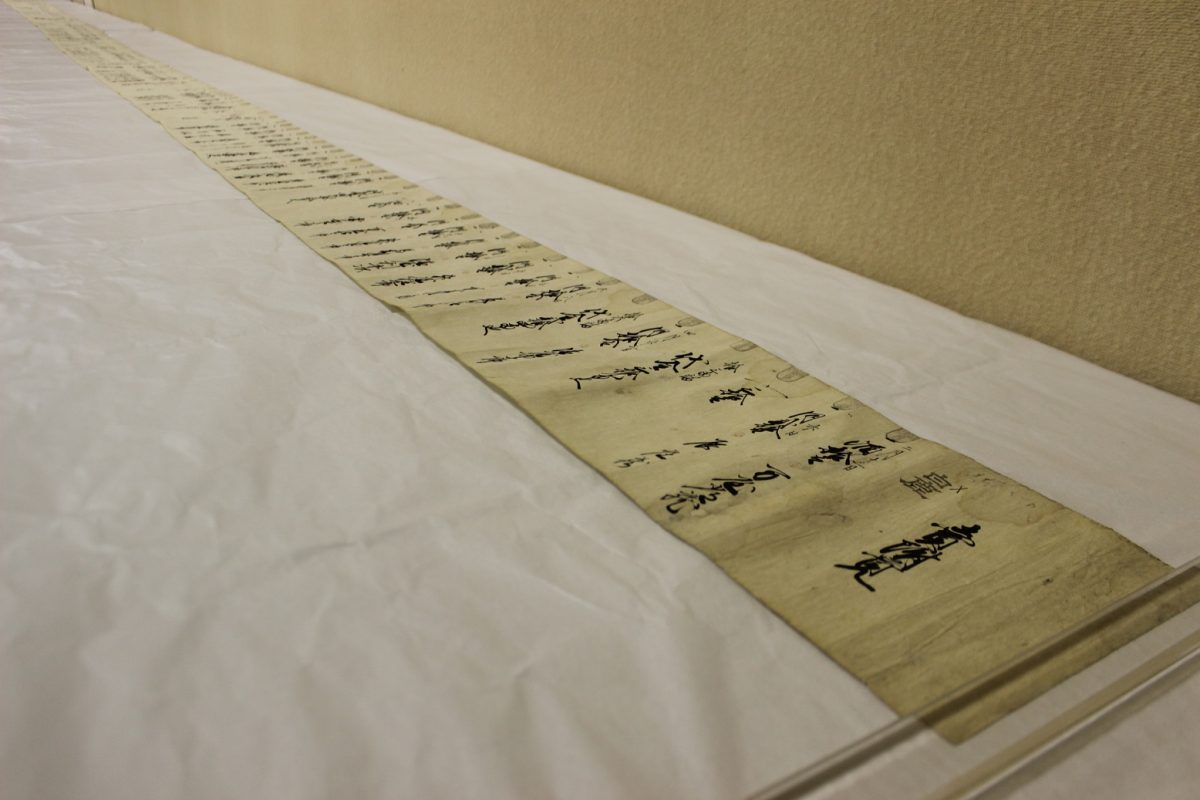
After the vessel arrival notice was delivered, a sales record (uritsuke-oboe) was issued and sent to each sake brewer. The sales record contained additional information including the vessel’s arrival records for the entire year, and the sales price of the casks. Because each wholesaler purchased several thousand casks of sake per year, the length of the sales record reached several meters long. Each price per 10 casks was also recorded, showing the price trends throughout the year.
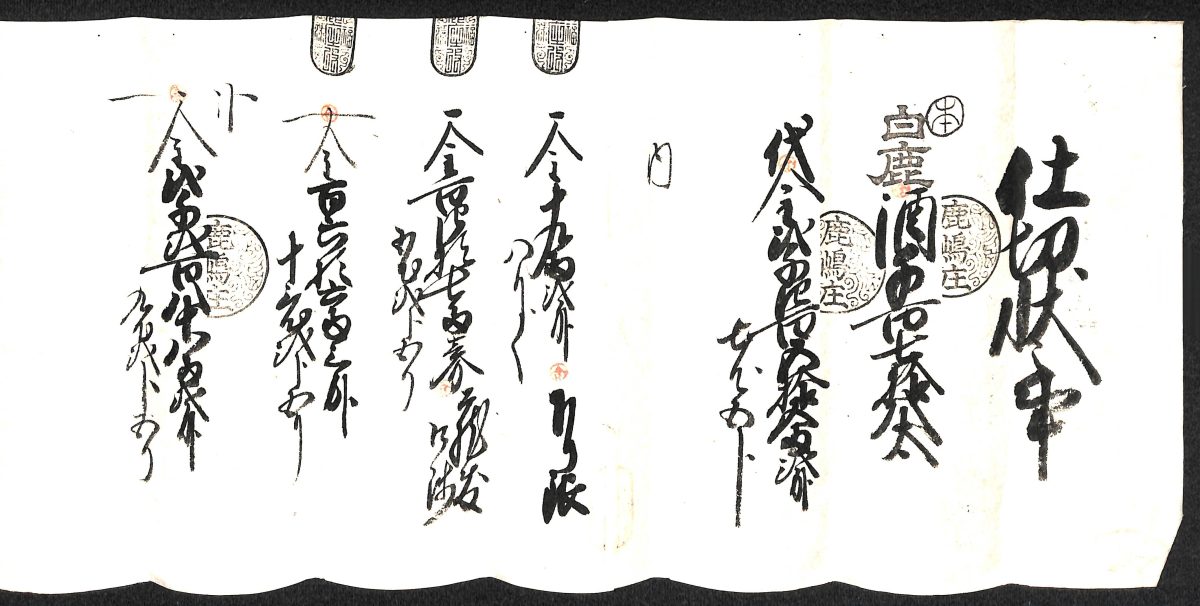
Lastly, an invoice (shikiri-jō) was issued by the wholesaler and sent to each sake brewer. The invoice indicated annual sales volume, the amount of sales for the year, the amount paid to the sake brewer after deducting the wholesaler’s commission and expenses, and the method and date of payment.
In summary, sake transactions during the Edo period were essentially made using three forms of paperwork: a vessel arrival notice (nyūsen-oboe), a sales record (uritsuke-oboe) and an invoice (shikiri-jō). By analyzing the information on the letters, we can see details of the transactions between Edo and kamigata, such as the variance of shipping quantity depending on the season and the price fluctuations. At the museum, we will take a further look into these letters and will share more detailed information in our future “Sake Talk” articles. Please look forward to it!


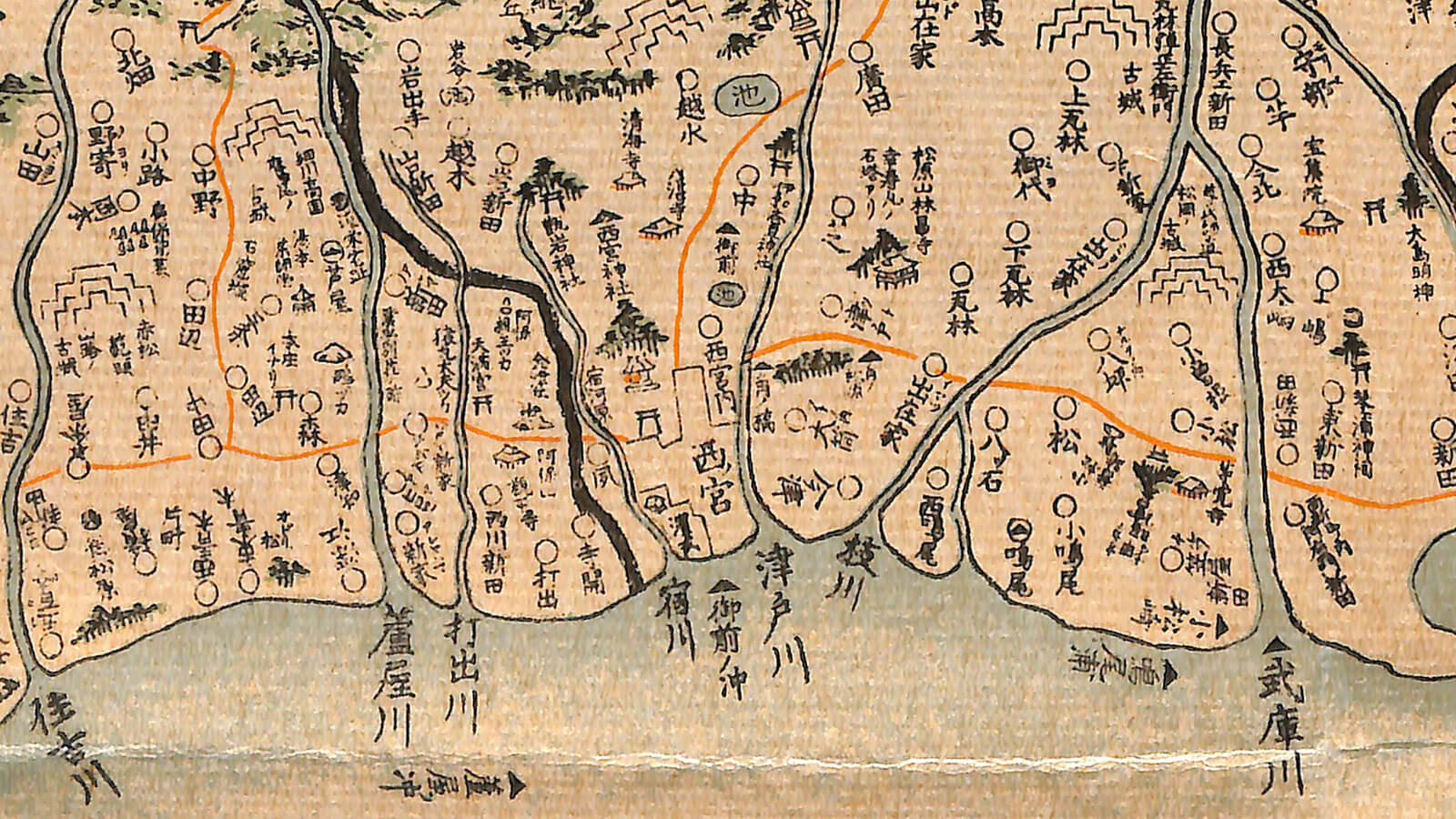
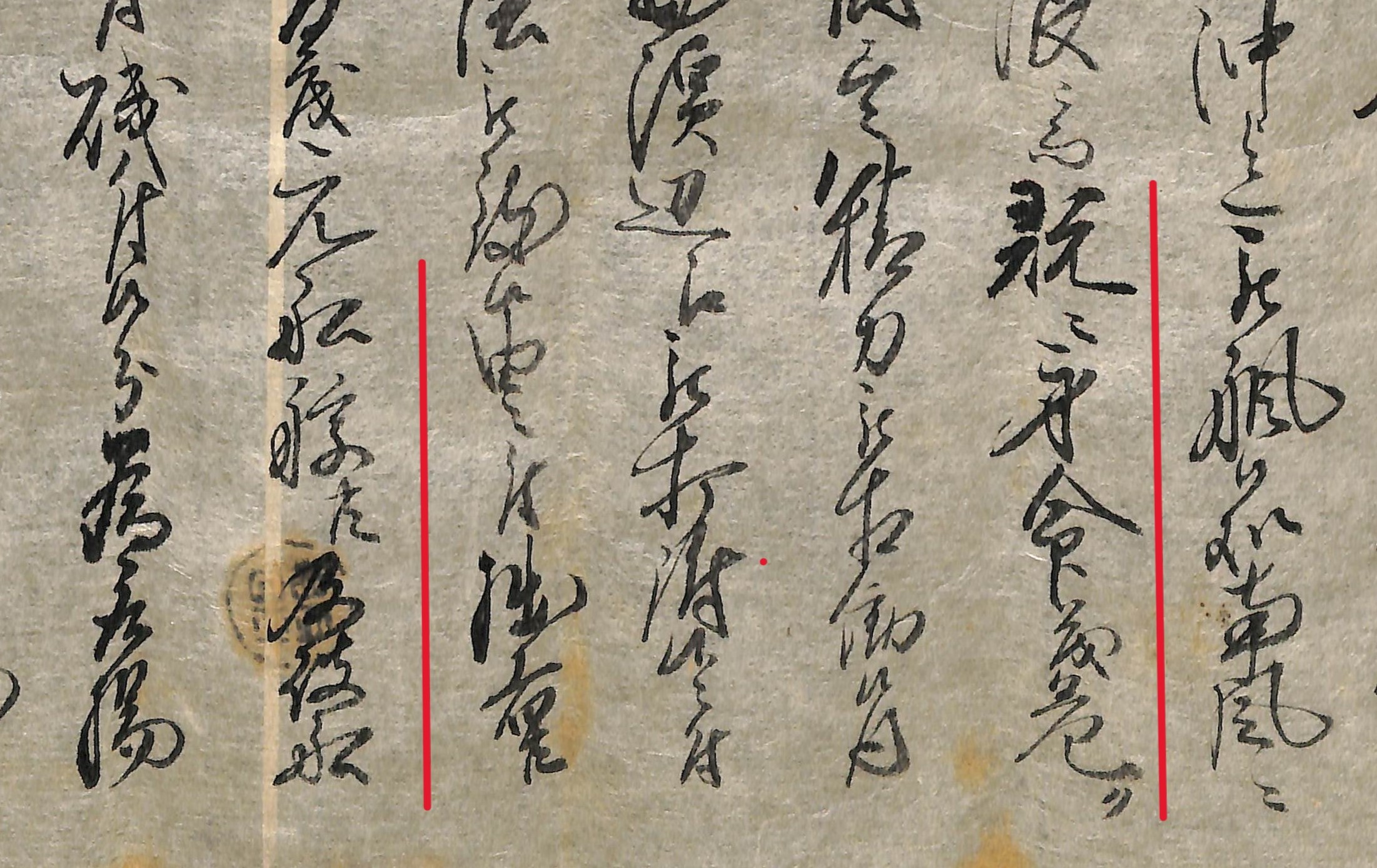
より(縮小)-1.jpg)
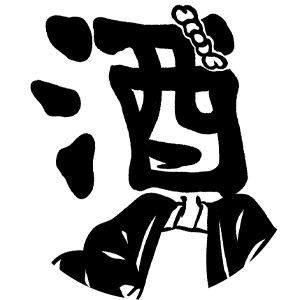

Let’s find out more about Nishinomiya’s deep connections to sake!